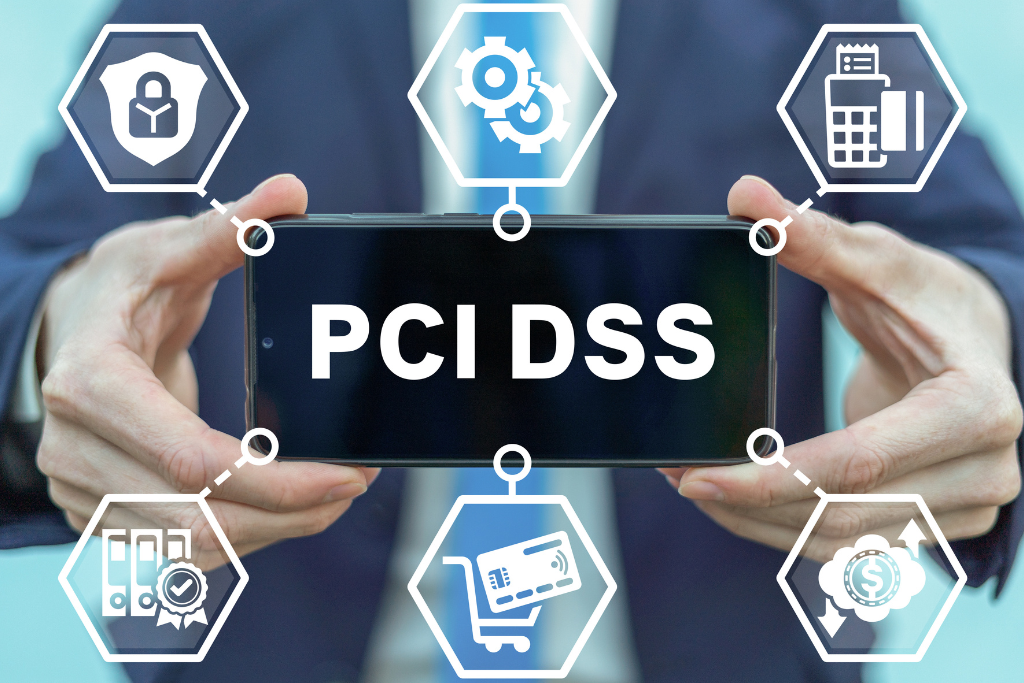
PCI DSS Compliance: A Complete Guide
PCI DSS Compliance: A Complete Guide (Updated for 2025)
In the dynamic world of digital commerce, the security of payment card data is paramount. Every transaction carries with it the implicit trust that sensitive financial information will be protected from compromise. The Payment Card Industry Data Security Standard (PCI DSS) is the globally recognized framework designed to fortify this trust. It is not a law, but a comprehensive set of security standards mandated by the major credit card brands, to which any entity that stores, processes, or transmits cardholder data must adhere.
In 2025, with the full enforcement of PCI DSS 4.0 for new requirements taking effect, understanding and diligently applying these standards is more critical than ever. Non-compliance can lead to severe financial penalties, reputational damage, and loss of consumer confidence. This guide provides a complete overview of PCI DSS, its requirements, and how organizations can achieve and maintain compliance in an evolving threat landscape.
What is PCI DSS Compliance? Meaning and Purpose
PCI DSS is a set of operational and technical requirements designed to secure environments that process, store, or transmit cardholder data. Its core purpose is to:
- Protect Cardholder Data: Ensure the confidentiality and integrity of sensitive payment card information throughout its lifecycle.
- Reduce Payment Fraud: By implementing robust security controls, the standard aims to minimize the risk of data breaches that lead to fraudulent transactions.
- Establish a Baseline for Security: Provide a consistent, global framework for data security that all stakeholders in the payment ecosystem can follow.
- Build Consumer Trust: Reassure consumers that their payment information is handled securely when they transact with compliant businesses.
Compliance with PCI DSS is a contractual obligation for merchants and service providers with their acquiring banks and card brands. Failure to comply can result in fines, increased transaction fees, suspension of payment processing capabilities, and mandated forensic investigations following a breach.

The 12 Requirements of PCI DSS
PCI DSS is built around 12 core requirements, which are logically grouped into six control objectives, covering various aspects of information security. These requirements are extensive, with hundreds of sub-requirements, but here's an overview of the foundational 12, now fully under PCI DSS 4.0:
PCI Control Objective 1: Build and Maintain a Secure Network and Systems
- Install and maintain network security controls: Implement and regularly update firewalls and routers to control traffic between trusted and untrusted networks, protecting the Cardholder Data Environment (CDE).
- Apply secure configurations to all system components: Do not use vendor-supplied defaults for system passwords and other security parameters. Implement secure configurations for all servers, databases, and network devices.
PCI Control Objective 2: Protect Cardholder Data
3. Protect stored account data: Minimize data retention, and protect stored cardholder data with strong encryption, truncation, or tokenization. Never store sensitive authentication data (SAD) after authorization.
4. Protect cardholder data with strong cryptography during transmission over open, public networks: Encrypt transmission of cardholder data across open, public networks (e.g., internet, wireless) using strong cryptographic protocols like TLS.
PCI Control Objective 3: Maintain a Vulnerability Management Program
5. Protect all systems and networks from malicious software: Deploy and regularly update anti-malware software on all systems commonly affected by malware.
6. Develop and maintain secure systems and software: Implement secure coding practices, manage vulnerabilities by installing security patches promptly, and ensure that all custom software is developed securely.
PCI Control Objective 4: Implement Strong Access Control Measures
7. Restrict access to system components and cardholder data by business need-to-know: Implement role-based access controls (RBAC) to ensure individuals only have access to the data and systems absolutely necessary for their job function.
8. Identify users and authenticate access to system components: Assign a unique ID to each person with computer access and implement strong authentication, including multi-factor authentication (MFA) for all non-console access into the CDE.
9. Restrict physical access to cardholder data: Implement strong physical access controls to all locations where cardholder data is stored, processed, or transmitted, including data centers, server rooms, and point-of-sale areas.
PCI Control Objective 5: Regularly Monitor and Test Networks
10. Log and monitor all access to system components and cardholder data: Implement audit trails to link all access to system components and cardholder data to individual users. Regularly review logs for suspicious activity.
11. Test security of systems and networks regularly: Conduct regular vulnerability scans, penetration tests, and other security assessments to ensure security systems and processes are effective. This includes new requirements for client-side script monitoring (PCI DSS 4.0, 6.4.3 and 11.6.1).
PCI Control Objective 6: Maintain an Information Security Policy
12. Maintain an information security policy and organizational roles, responsibilities for information security: Establish, implement, and maintain a comprehensive information security policy that is reviewed regularly and communicated to all personnel. This includes incident response planning.
_1750846109.png)
Who Needs to Comply with PCI DSS? (Levels of Compliance)
PCI DSS applies to any entity that "stores, processes, or transmits" cardholder data. This includes merchants, service providers, and even third-party vendors who interact with the Cardholder Data Environment (CDE). Compliance requirements vary based on the volume of transactions processed annually, categorizing entities into four merchant levels:
- Level 1: Over 6 million card transactions annually, or any merchant that has suffered a data breach. Requires an annual Report on Compliance (RoC) by a Qualified Security Assessor (QSA) and quarterly network scans by an Approved Scanning Vendor (ASV).
- Level 2: 1 million to 6 million transactions annually. Typically requires an annual Self-Assessment Questionnaire (SAQ) and quarterly ASV scans. An RoC may be required by the acquiring bank.
- Level 3: 20,000 to 1 million e-commerce transactions annually. Requires an annual SAQ and quarterly ASV scans.
- Level 4: Fewer than 20,000 e-commerce transactions annually. Requires an annual SAQ and quarterly ASV scans.
Service providers have their own classifications and validation requirements, often more stringent than merchants at similar transaction volumes.
Challenges in Achieving and Maintaining PCI DSS Compliance
While essential, achieving and maintaining PCI DSS compliance presents several challenges for organizations:
- Defining and Minimizing Scope: Accurately identifying all systems, networks, and applications that store, process, or transmit cardholder data (the CDE) is complex. Reducing the CDE scope through methods like tokenization or segmentation can simplify compliance, but requires careful planning.
- Continuous Compliance vs. Annual Audit: PCI DSS is an ongoing security program, not a one-time audit. Maintaining continuous adherence in dynamic IT environments is a significant operational challenge.
- Evolving Requirements (PCI DSS 4.0): Keeping up with updates and new requirements, such as those introduced in PCI DSS 4.0 (e.g., client-side script integrity), demands continuous vigilance and adaptation.
- Resource Constraints: Smaller organizations may lack the internal cybersecurity expertise or dedicated resources to manage the extensive requirements effectively.
- Third-Party Vendor Management: Ensuring that all third-party service providers (e.g., payment gateways, hosting providers) that interact with cardholder data are also PCI DSS compliant adds a layer of complexity.
Leveraging Technology for PCI DSS Compliance: The Role of a GRC Platform
Manually managing PCI DSS compliance across complex IT environments is no longer sustainable. A robust Governance, Risk, and Compliance (GRC) platform is an indispensable tool for streamlining processes, ensuring continuous adherence, and simplifying audit readiness. Risk Cognizance provides an integrated solution to empower your PCI DSS journey:
- Centralized Control Management: Our Compliance software enables you to map all PCI DSS requirements directly to your internal controls, creating a single source of truth for your compliance program. You can easily track status against Regulatory Compliance Management Software frameworks.
- Automated Evidence Collection: Automate the gathering of evidence from your IT systems, security tools, and applications, drastically reducing manual effort and ensuring audit readiness for reports like AOCs and SAQs.
- Continuous Monitoring & Risk Visibility: With IT & Cyber Compliance Management Software and IT & Cyber Risk Management Software, you gain real-time insight into your compliance posture. Continuous monitoring helps identify deviations from PCI DSS requirements promptly, allowing for proactive remediation.
- Robust Policy and Procedure Management: Our Policy Management Software centralizes the creation, approval, and dissemination of all information security policies required by PCI DSS Requirement 12, ensuring all personnel are aware of their responsibilities.
- Streamlined Audit Readiness: The Internal Audit Management Software capabilities facilitate seamless collaboration with QSAs, manage audit workflows, track findings, and generate comprehensive reports needed for validation.
- Comprehensive Vendor Risk Management: Our Vendor Risk Management Software helps you manage the compliance of your third-party service providers, ensuring they meet their PCI DSS obligations and do not introduce undue risk to your CDE.
- Integrated GRC Ecosystem: Risk Cognizance's Integrated Connected GRC Software provides a holistic view, connecting PCI DSS efforts with your broader Enterprise Risk Management Software and Operational Risk Management Software, fostering a unified approach to security and compliance.
_1750846946.jpeg)
Benefits of Proactive PCI DSS Compliance
Investing in proactive PCI DSS compliance yields significant strategic advantages beyond mere adherence:
- Breach Prevention: The primary benefit is significantly reducing the likelihood of a data breach, protecting your organization from the devastating financial, legal, and reputational fallout.
- Avoidance of Penalties: Mitigate the risk of severe fines and increased transaction fees imposed by card brands and acquiring banks for non-compliance or breaches.
- Enhanced Customer Trust: Demonstrating a strong commitment to data security builds and maintains the invaluable trust of your customers, fostering loyalty and positive brand perception.
- Operational Efficiency: Automating compliance processes leads to reduced manual effort, fewer errors, and a more streamlined approach to security operations.
- Improved Security Posture: The rigorous requirements of PCI DSS often elevate an organization's overall cybersecurity posture, creating a more secure and resilient IT environment.
Securing the Future of Payments
PCI DSS compliance is a non-negotiable aspect of operating in the payment card ecosystem. In 2025, with the nuances of PCI DSS 4.0 now fully in effect, a strategic, technology-driven approach is essential for achieving and maintaining continuous adherence. By leveraging comprehensive GRC platforms like Risk Cognizance, organizations can not only meet their compliance obligations with greater efficiency but also fortify their defenses, protect invaluable cardholder data, and secure their place in the future of digital commerce.


